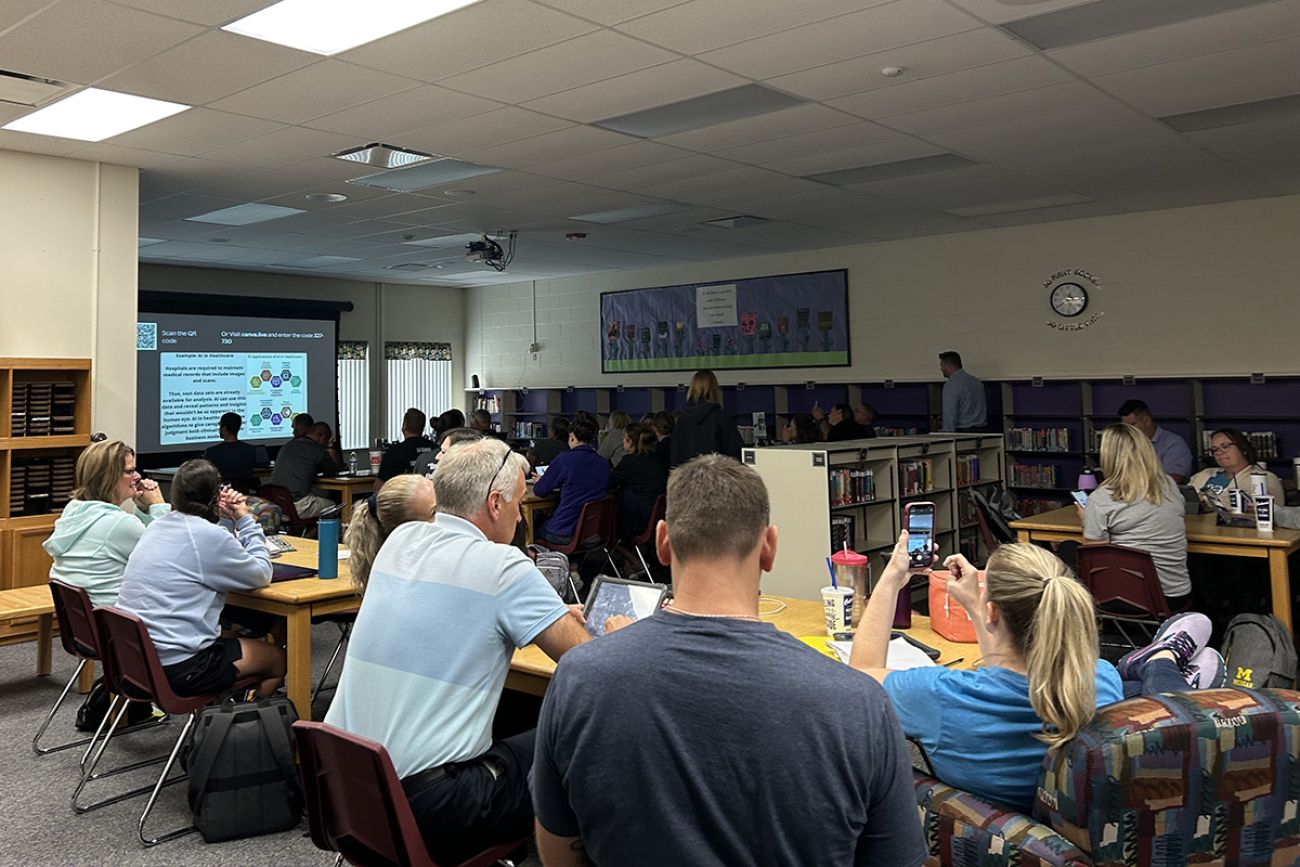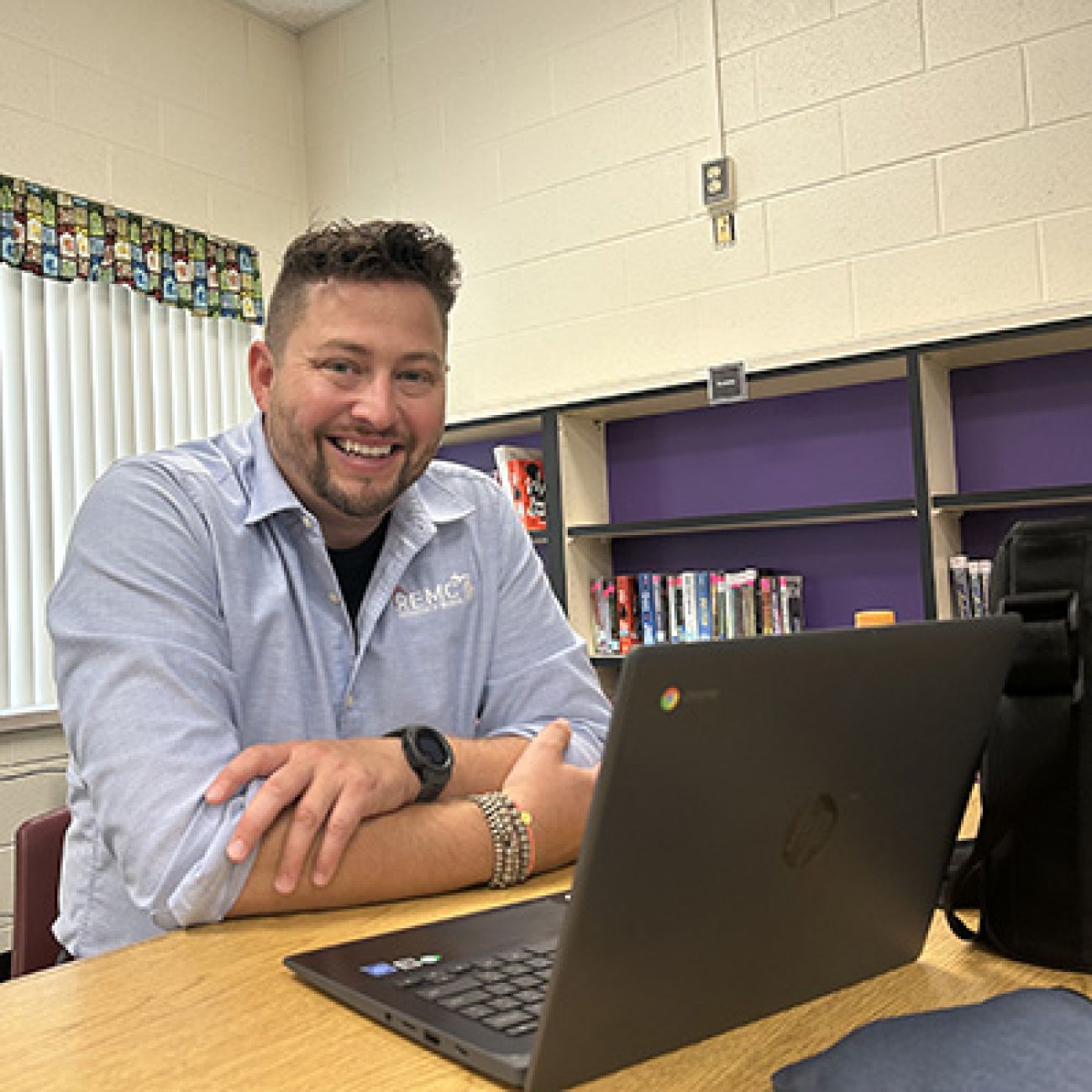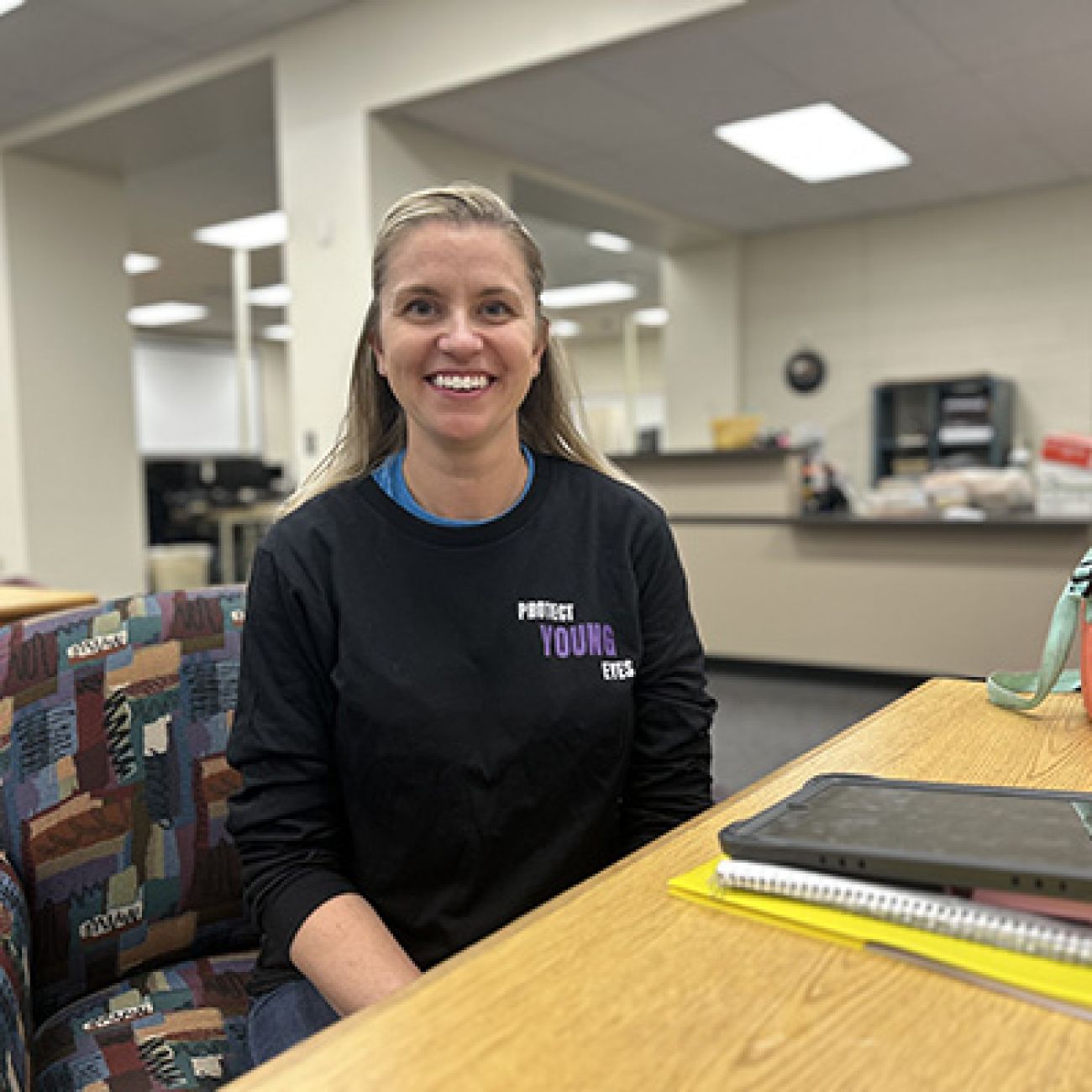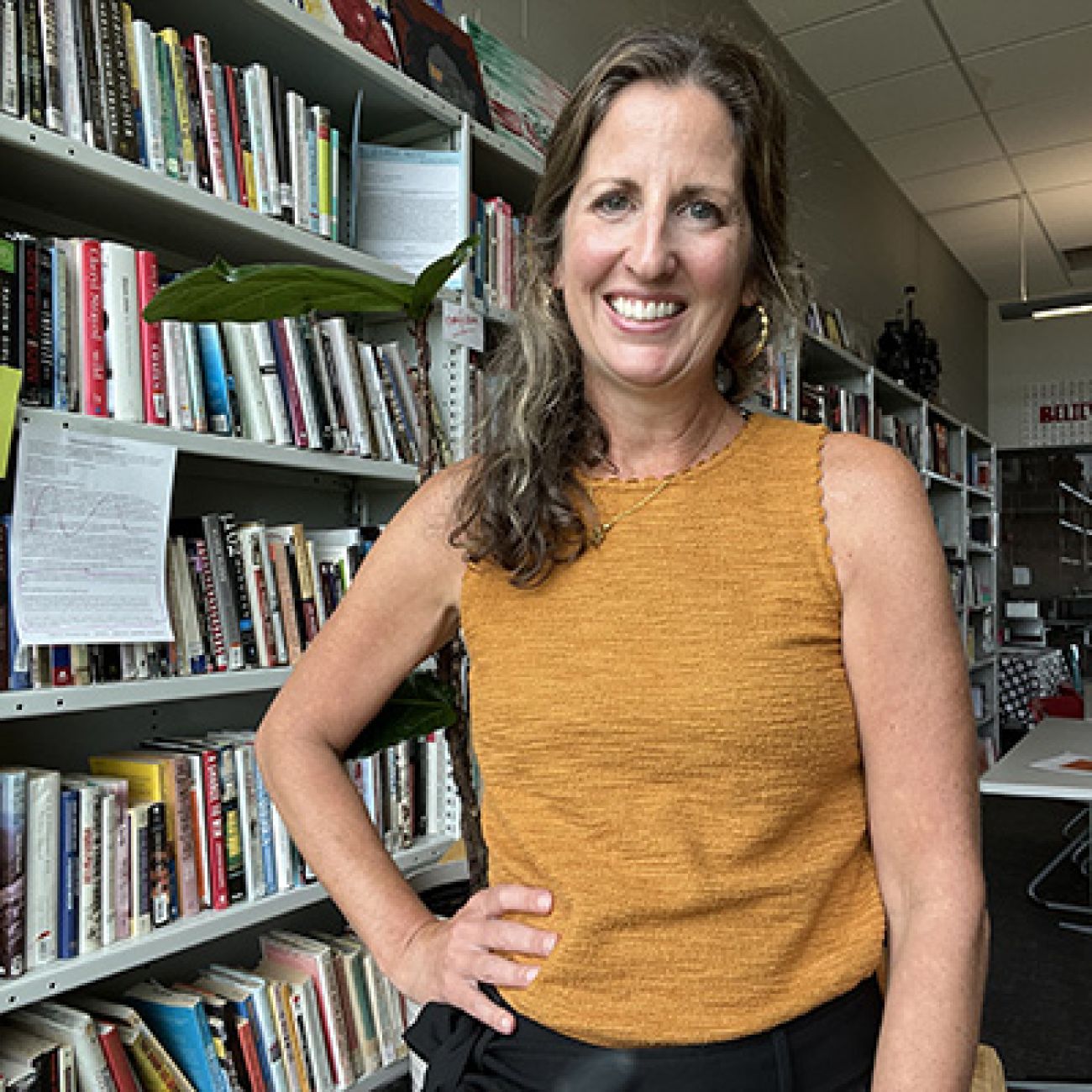Excited but worried, Michigan teachers wrestle with artificial intelligence


- Michigan teachers are curious but cautious about integrating artificial intelligence into the classroom
- AI-powered tools like ChatGPT will only proliferate, so educators are learning how to use it because their students sure will
- Teachers say they want to talk to their students about the pros and cons of these tools
SAGINAW—Earlier this year, Mark Lyons was scrolling through TikTok to learn how teachers were using artificial intelligence.
It was essentially one-minute professional development, he joked in a presentation to teachers at Swan Valley Middle School in August.
Since last school year ended, Lyons estimates he has presented information about ChatGPT and other artificial intelligence tools to about 1,000 teachers and administrators.
“I’ve had to update my slides monthly since last September, it’s so fast,” said Lyons, the instructional technology and STEM integration program director for Saginaw Intermediate School District.

Within two months of its launch last November, ChatGPT grew to 100 million monthly active users. It’s one of many tools using generative artificial intelligence, or the ability for machines to learn information and create new content.
Bloomberg Intelligence estimates the generative AI market will expand from $40 billion in 2022 to $1.3 trillion by 2032.
Some prominent school districts around the country quickly banned ChatGPT, a free chatbot, but have since reversed course. New York City Public Schools initially restricted access to ChatGPT but later reversed the ban.
With a bit of time now under their belts, Michigan teachers who spoke to Bridge share a mix of optimism and concern about the technology.
“It’s here, it’s going to stay here…we have to be nimble and flexible,” Craig Blower, principal at Swan Valley Middle School in Saginaw, told Bridge Michigan. “And do we have to embrace it? We have to figure out a way to utilize it because kids are using it.
“The easy solution is ‘we're gonna block it, we're done,’ but they're gonna find a way around it. That's the reality.”
Related:
- How AI is altering health care in Michigan
- Did Johnny write this or a robot? AI chatbots rock Michigan schools
- In Las Vegas, firms pitch mass-shooter security to schools. Does it work?
Lyons presents to teachers about how to use the technology in education, ethical questions surrounding AI and the types of jobs students may one day have working with AI.
He said a three-hour training session means teachers are likely to experience a “rollercoaster of emotions” as they ebb and flow between the “scaries” about the power of the technology and the realization that it could save teachers time on substitute and lesson planning.
Heather Quellet, a sixth grade math teacher at Swan Valley Middle School, attended the training in August. She said she has not yet used AI for teaching, but anticipates using it to help with parent email and newsletters, lesson plans and test assessments.

Swan Valley teachers also attended training on how to use AI-powered tools to generate test questions that align with state standards. Blower, the principal, said he anticipates his district will use artificial intelligence to help identify patterns on student attendance and parent engagement.
Janelle Miles, an English teacher at Northview High School in Grand Rapids, has already used AI to transcribe and summarize a presentation she recently recorded for students.
“We can either embrace it and learn as much as we can about it and dispel the fear by learning about it. Or we can stuff it under the rug and stay afraid,” she said “We don't want to do that. At least I don't want to.”
Troy Hicks, an English and education professor at Central Michigan University, said he has discussed ethical questions about how to use AI with freshman honors students, and asked questions to Perplexity.ai about the history of American education.
Later this semester, the students will have an assignment where they argue for a specific education policy. Hicks anticipates instructing students to use ChatGPT to play the role of an opposing view and then use that information to structure a strong counter argument.

He is also optimistic that AI-powered writing tools for students who are learning English.
For example, Wordtune suggests a different word or phrase from the one the user types in. Hicks said teachers can use that tool in small group instruction to have discussions with students about the most effective word choice or sentence structure to communicate an idea.
“My hope is that there's going to be a number of really creative teachers who are teaching our multilingual learners and are going to be able to use the AI to help support them in new ways.”
The drawbacks
Miles, the Grand Rapids English teacher, said she has already warned students to avoid plagiarism.
She said forming good relationships with her students increases the chances students will do their own work and use AI “for good, not evil.”
“Using it so that you are not making AI think for you. You are making AI work for your thinking.”

She said she organizes writer workshops to include mini lessons and times where students get feedback on drafts or sections of their writing assignment.
It’s a red flag, she said, when a student has come with no work throughout the project and then shows up on the last day with a completed assignment.
Also, she tells students she uses Draftback, a Google Chrome extension that displays revision histories on online documents.
Blower, the Swan Valley principal, told Bridge that while his district doesn’t have a policy on AI, the district already has policies about acceptable uses for district computers and internet networks.
Quellet said she worries AI tools may negatively impact students’ social and emotional skill development.
“When they're using these types of tools, it's taking away their (need to learn) patience, their frustration, it's giving them an immediate solution to a problem.”
She said she is trying to create lessons that are engaging to students to hold their attention including using tests that mimic gaming.
“The more I use it, the more I'm going to know more about it,” she said.
AI advancements carry plenty of cautions, and teachers say they have a responsibility to show students how distortions and misinformation can be spread by the technology.
At the training Lyons led, teachers discussed how AI is already being used to use famous people’s voices to say things they never said.
Lyons said he wants teachers to expose students to deep fakes, and help students learn to separate fact from fiction.
Students are also future voters, Lyons noted. He expects bad actors will create smear campaigns during election races.
Starting in November, Google will require political ads that use artificial intelligence to disclose that information in a prominent way, the Associated Press reported earlier this month. The policy will affect YouTube and other services.
Eventually, students will need to “really understand their digital footprint.”
“So the more stuff you post online, the more stuff people could maybe pull from that and use them as a deep fake,” he said.
Is it possible, Quellet wondered, the technology could eventually be used so that a student could impersonate another student to call in a threat to a school.
Small wonder that there’s anxiety intertwined with excitement.
“For every positive thing,” Quellet said, “I can think of a negative that this could be used for.”
See what new members are saying about why they donated to Bridge Michigan:
- “In order for this information to be accurate and unbiased it must be underwritten by its readers, not by special interests.” - Larry S.
- “Not many other media sources report on the topics Bridge does.” - Susan B.
- “Your journalism is outstanding and rare these days.” - Mark S.
If you want to ensure the future of nonpartisan, nonprofit Michigan journalism, please become a member today. You, too, will be asked why you donated and maybe we'll feature your quote next time!


